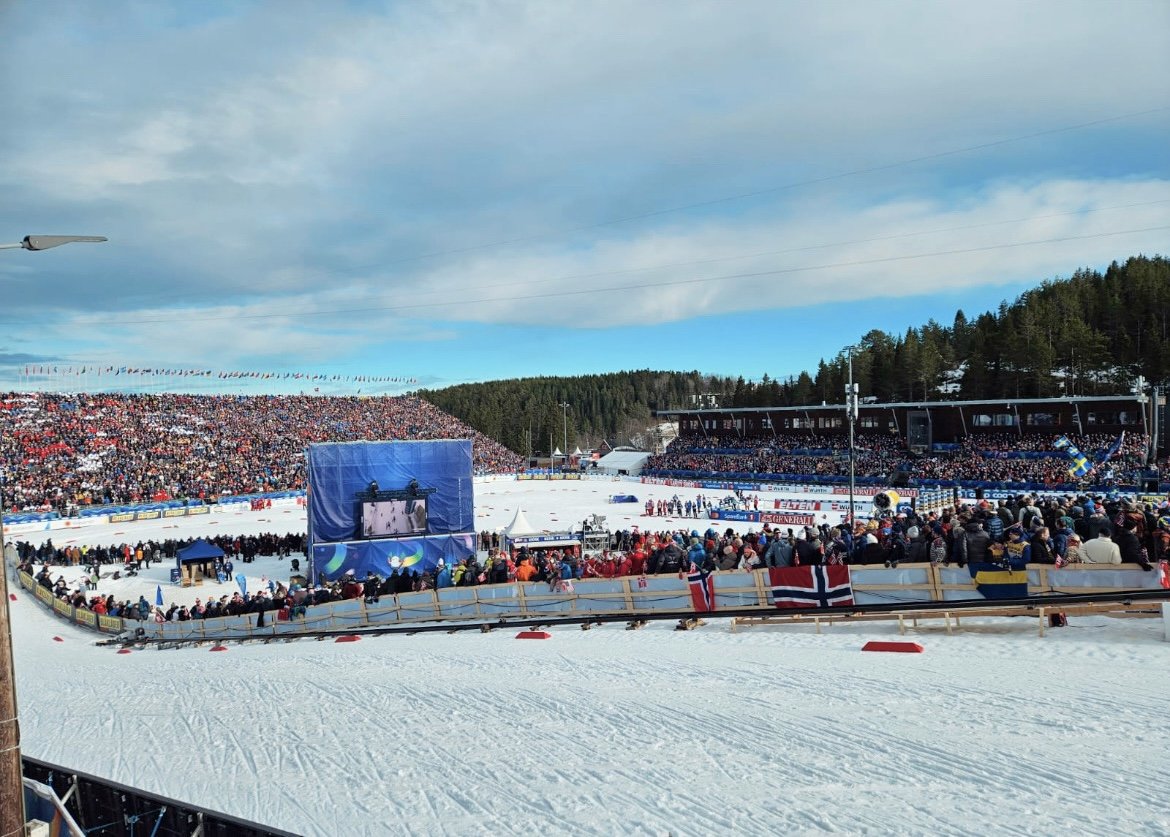Peaking for the World Championships: Insights for Trondheim 2025
An article written by Sophie Herzog, Øyvind Sandbakk, Trond Nystad and Rune Talsnes
Opening day of the 2025 Nordic Ski World Championships in Trondheim, Norway. Photo credits Øyvind Sandbakk
Peaking: Less Magic, More Consistency
To perform well in any competition, one must be physically and mentally well prepared. In past articles, we’ve emphasized the importance of a long-term training strategy – one that spans over several years and prioritizes continuous development. This progression is achieved through structured training and a “control system” – regular testing and analysis – to guide decision-making and ensure consistency. The best athletes not only train the best, but they also minimize mistakes. Having a reliable system in place helps them to repeatedly “do the right thing” – i.e., making informed choices – and stay on track. The concept of training well while monitoring progress is nothing new, yet many athletes fail to reach their full potential in the most important races due to poor training-recovery balance, or a lack of systematic control.
Peaking for a major event like the World Championships is not caused by sudden changes or last-minute fixes. Most important, those who have prepared well over several years are also those who are ready to utilize their potential when it counts the most. Then, every athlete must experiment to find their optimal approach to finetune their abilities when approaching the final phase, while still being flexible to adapt to changes in circumstances. And sometimes these circumstances force a less-than-optimal solution. For example, athletes who qualified early for the championships have the luxury of a long-term peaking strategy, while those still fighting for a spot must still deliver great races shortly before the Championships to qualify – and thus have to apply a less-than-optimal peaking strategy.
Is there a perfect taper?
The difference between winning a gold medal and missing the podium is often incredibly small. In the men’s 20 km at the World Championships, just 2 cm separated 2nd and 4th place, while in the women’s race, only 1 cm separated 1st and 2nd. With margins this small, the right peaking strategy can be one aspect which makes the difference. However, sometimes there is a belief that peaking involves dramatic shifts in training right before the big event. Yet, the biggest contributor to performance is mainly the previous years of high-quality training, where every small detail has been drilled. For example, in the 20 km races in Trondheim, the technique in the last turn, the final sprint and the final lunge for the finish-line is influenced by how the athletes have prepared physically and mentally as well as how they have trained and mastered the necessary skills. If an athlete has trained well and is well-prepared, they can prepare normally without relying on a magic bullet. This also applies for the physical preparation in the peaking phase.
The optimal peaking strategy and its effect on the results depends on multiple factors, including training history, fitness, health, mental state, nutritional state, mood, team dynamics, sleep, mastery of the elements (altitude, weather etc.) and many other factors. Athletes who consistently perform well at the season highlight have all fine-tuned their own preparation methods. Their confidence stems from knowing what works and confident athletes make fewer mistakes in their pre-race routine than those who are uncertain about their approach.
Unlike some sports where athletes have a long competition break before the season highlight to fine-tune their peaking, cross-country skiers face a packed race calendar leading up to the Championships, which does not really allow for a long “peaking period”. The athletes who qualified early shift their focus from racing in the world cup to preparing for the Championships approximately 4-6 weeks before the event. Some choose to prepare at altitude, while others prepare at lower elevations. Typically, athletes dedicate the first 2-4 weeks of this phase to more specific, high-volume training before reducing the load over the last 1-2 weeks – the so-called “taper”.
During the taper, training volume is typically reduced by 20%-40%, primarily through shortening session duration and a slight reduction in the number of sessions. While volume gets lower, high-intensity, race-specific sessions are often used in this last phase. This strategy intends to preserve fitness by creating a “supercompensation” effect from the extra recovery, aiming to have athletes arriving at the start line fresh, confident and ready to perform.
In essence, the best method to peak at the most important race of the year is to train well over a long period to ensure a strong foundation. On top of this foundation, a well-executed taper maintains momentum rather than seeking a shortcut to peak form while allowing for just enough recovery to create a performance boost.
Psychology and Pressure: Calm Confidence wins Championships
However, we also know that preparation is not only about physical readiness – it is also about psychological confidence. Athletes who know they have trained well approach major events with self-confidence and calmness. When everything has been rehearsed and optimized in training, it is easier to focus on execution. Sticking to what works, focusing on what you can influence, trusting the process and executing a race strategy that is built on years of consistent training – sounds very unspectacular but works the best.
Good luck to all competitors!
References
Tønnessen E, Sylta Ø, Haugen TA, Hem E, Svendsen IS, Seiler S. The road to gold: training and peaking characteristics in the year prior to a gold medal endurance performance. PLoS One. 2014 Jul 14;9(7):e101796. doi: 10.1371/journal.pone.0101796. PMID: 25019608; PMCID: PMC4096917.
Mujika Iñigo, “Tapering and peaking for biathlon competition”, IBU Academy Journal Issue 3, 2025, p. 18-23, https://www.ibuacademy.com/science/journal (accessed 04.03.1993)

